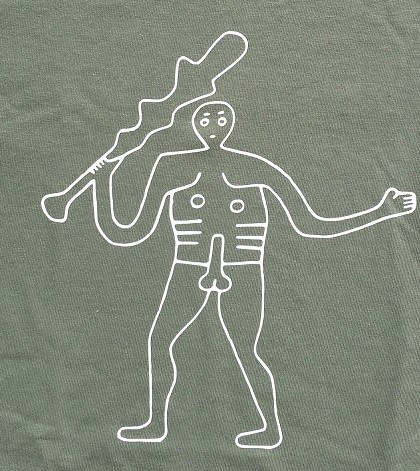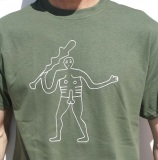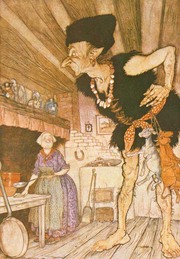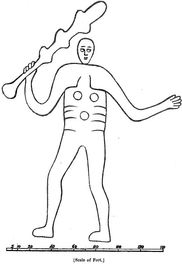Cerne Abbas Giant
SKU:
£17.85
£17.85
Unavailable
per item
Gildan
In days gone by giants walked the land and became a rich source of myth and legand. Indeed the very origins of mythical Albion itself lie in tales of the son of Neptune defeating the Celts and naming the land after himself.Albion himself was subsequently vanquished by Hercules, and he is the giant that many think is depicted here. William Blake later also embodies Albion as a giant named Cronos. The chalk figures continue to haunt the landscape as a reminder of their presence and, as Peter Knight Observed, "The Giant reverberates of times long gone when tales of heroic deeds were commonplace, when cultural and racial identity was defined by one's myths." We will all remember,of course, the ominous words "Fi-fi-fo-fum, I smell the blood of an Englishman" from the Jack and the Beanstalk fairy tale which continues the tradition .
Phallicism and fertility are also universal themes of worship of great antiquity, and in no way unique to the Cerne Abbas hill figure. Indeed, phallic symbolism from 17,000 years ago can be found in the iconic paintings in the caves of Lascaux in France . There was a strong association between human virility and the bounteous gifts of nature, which was celebratory rather than profane. Phallic symbolism also appears in other spheres of worship and celebration. So, many megaliths themselves are very phallic in nature and the Maypole, as part of spring time festivals, has similar connotations for some.
It was following the emergence of modern Christianity that sex came to be viewed as sinful, a process that reached its' apotheosis in the Victorian era when the Cerne Abbas figure found himself emasculated for over 100 years. The phallus now became associated with deviance and occultism, and the last thing the prudish Victorians wanted was a 36 foot reminder that could be seen for miles carved into a Dorset hillside. So by 1842 he had lost his genitals bu gained a belly button. His manhood was eventually fully restored in the 1920's.
It was following the emergence of modern Christianity that sex came to be viewed as sinful, a process that reached its' apotheosis in the Victorian era when the Cerne Abbas figure found himself emasculated for over 100 years. The phallus now became associated with deviance and occultism, and the last thing the prudish Victorians wanted was a 36 foot reminder that could be seen for miles carved into a Dorset hillside. So by 1842 he had lost his genitals bu gained a belly button. His manhood was eventually fully restored in the 1920's.
These days you can wear the iconic symbol with pride for all to see. For those of a sensitive disposition you can simply explain that it is a man lying down with a pair of scissors on his lap.






